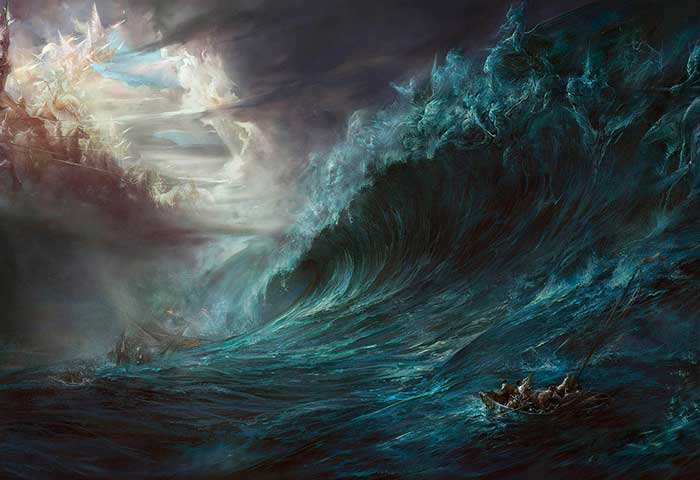[ad_1]
Jan Van Eyck was a Flemish painter during the period of the Northern Renaissance. The exact date and location of his birth are uncertain, but it is assumed he was born around the year 1390 (1). He used oil and canvas to create exceedingly precise and realistic paintings unlike the decorative, unrealistic Gothic style prominent before his time. But the haunting question remains: Was this mysterious painter a Christian hero or heretic?
Van Eyck was employed at two different courts during his lifetime. Initially, he worked for John of Bavaria, Count of Hainaut-Holland (1422-24), and later for Philip the Good, Duke of Burgundy (1425-41). "Employment at court secured him a high social standing unusual for a painter" (2). Also unusual was his habit of signing and dating his painting, which greatly simplifies identification of his work.
The Ghent Altarpiece:
The Ghent Altarpiece, the work of both Jan Van Eyck and his brother Hubert, was one of the most remarkable paintings of the period. Unlike normal triptychs, the Ghent Altarpiece has four separate panels and is painted on both sides. It has been called the "super-altar" because it contains twenty unique pieces of various dimensions.
The centerpiece in this display is a lamb standing in heaven with blood pouring from its breast, symbolic of the atonement of Christ, the Lamb of God now alive from the dead. This is taken from the Revelation where St John saw "between the Throne (with the four living creatures) and the Elders a Lamb standing, as if slain …." (Rev. 5: 6).
Jan Van Eyck used an oil medium for some of his paintings to create "atmospheric perspective:" where, for example, the mountain range merges imperceptibly with the color of the sky. Although he was not the first to use oil as a medium, he developed varnish by mixing oil in his paintings, instead of the egg medium usual to Medieval paintings. The oil cave his paintings a jewel-like brilliance, translucence and intensity of color.
Arnolfini Marriage:
Van Eyck influenced nature as a mirror of Divine truth. On the surface his religious symbolism reveals a solid understanding of spiritual reality as expressed in everyday life. The "Arnolfini Marriage", full of religious symbolism, displays the sacramental nature of the marriage covenant.
Here is the painter playing the role of wedding photographer hundreds of years before the advent of the camera. A related episode had him traveling to the court of Princess Isabella of Portugal with a marriage proposal from his patron, Phillip the Good. Part of his assignment was to carry back a portrait of the lovely princess for Phillip, who had not yet met his bride to be.
Incipient Rosicrucianism:
However, there are others who detect a more sinister side of Van Eyck, ascribing his skill in oil to alchemy. There is evidence in the Ghent Altarpiece to suggest that he foreshadowed the Rosicrucianism that surfaced at the court of England's Queen Elizabeth I in the following century. The rose being a symbol of secrecy suggests the communication of esoteric knowledge under a veil of Christian imagery.
For example, St Barbara, the Patron Saint of alchemy appears on the Ghent Altarpiece. Moreover, the word AGLA is hidden in a tile on one of the floors. According to Philip Coppens the word was a protective magical formula, a Kabbalistic acronym. In his essay "Van Eyck: The Painting Heretic?" Coppens concludes, "… if" The Adoration of the Lamb "was indeed meant to be a magical talisman for a New Age, then he [Van Eyck] was indeed the man who seeded and initiated that age" (3).
Jan Van Eyck had influenced the history of art by developing intenet realism, landscape, and portraiture in art as well as introducing the use of oil paint. He died in Bruges, Belgium, in 1441. The Van Eyck gallery may be viewed at http://en.wikipedia.org/wiki/Jan_Van_Eyck
********************
(1) Jan Van Eyck Biography at jan-van-eyck.org. Retrieved October 9, 2013.
2 Jan van Eyck (ca. 1380 / 90-1441) at metmuseum.org. Retrieved October 9, 2013.
(3) Philip Coppens, " Van Eyck: The Painting Heretic?" at oil-painting-techniques.com. Retrieved February 24, 2014.
[ad_2]
Source

